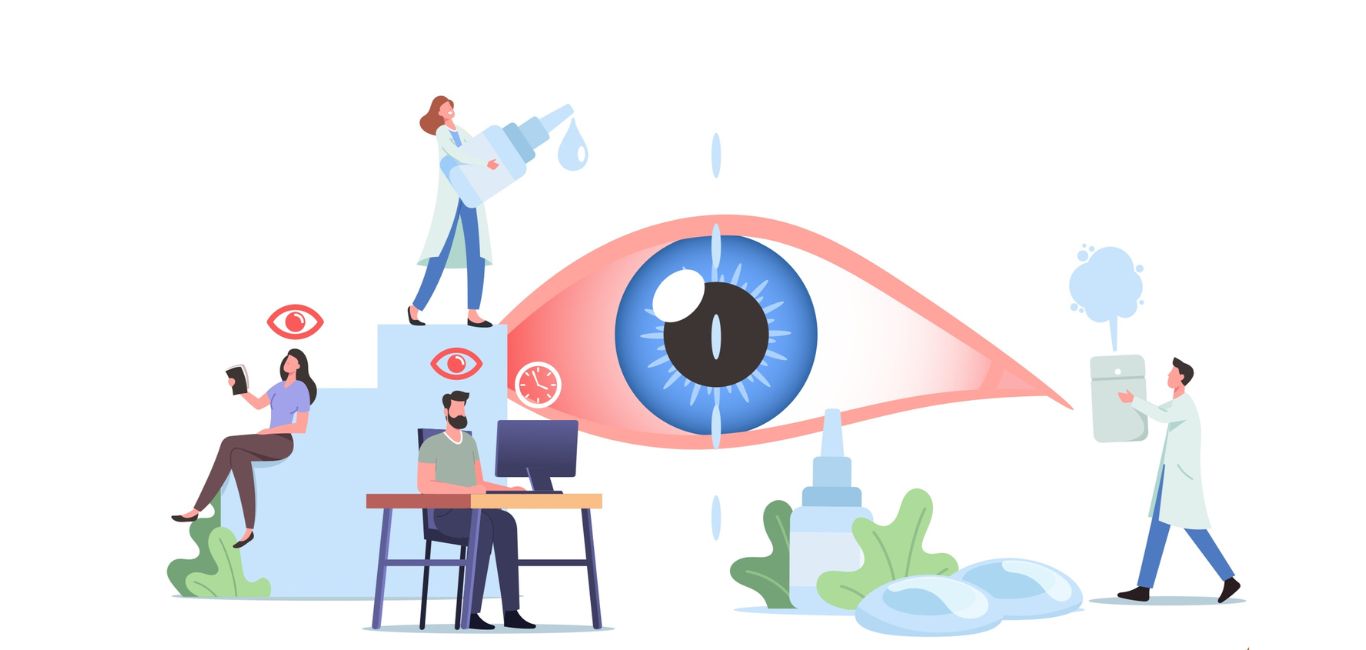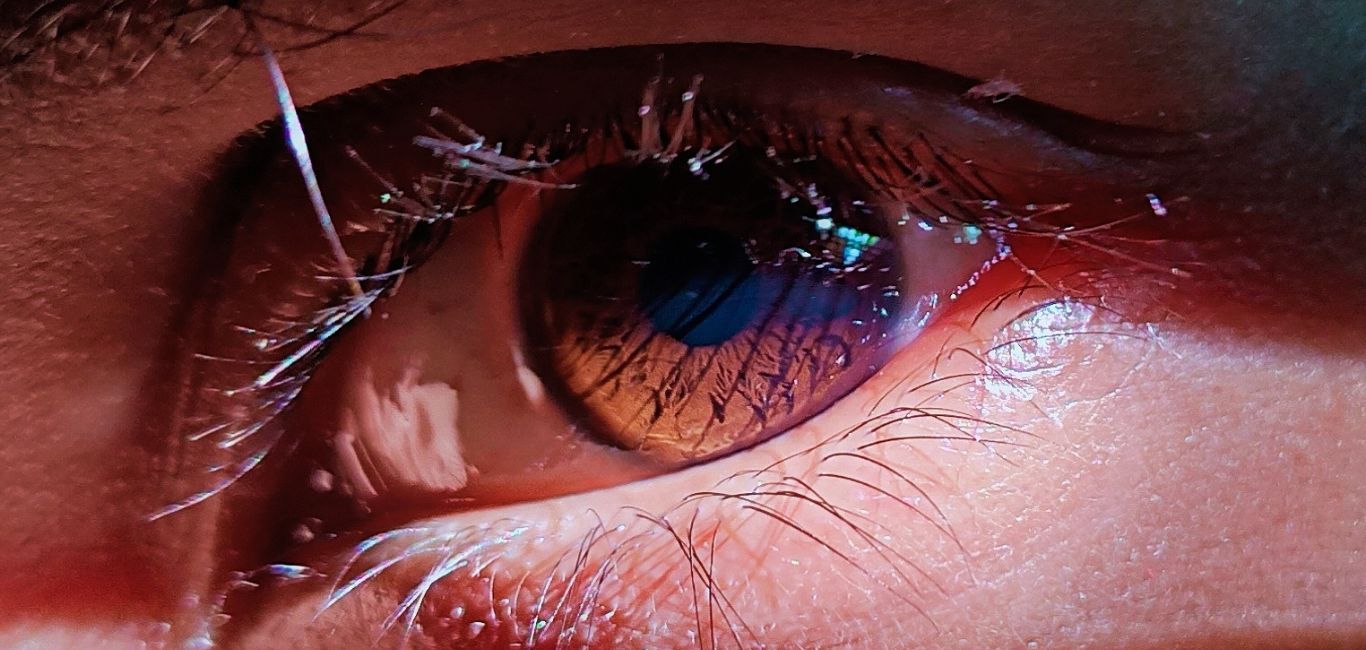
Redness of the eyes, also referred to as being bloodshot, occurs when there is irritation or inflammation in any part of the eye. It is usually because of tiny blood capillaries under the surface of the eye become dilated or enlarged. This reaction is a part of the defence mechanism of the body, where histamine is released that enlarges these blood vessels. Most cases of red eye are harmless and resolve within a few days. However, if it is painful, it could be something serious.
Symptoms of red eye
Some of the common conditions that present with red eye and their symptoms are:
- Conjunctivitis – One or both eyes become red and there is a feeling of irritation in the eye. The affected eye becomes itchy and watery, with a sticky coating covering the eyelashes. A blood vessel that bursts in the eye creates a bright red spot.
- Iritis – It refers to the inflammation of the coloured part of the eye (iris). The eye becomes red and sensitive to light. Vision becomes blurred and there is an onset of headache.
- Corneal ulcer – The eye becomes red and sensitive to light. There is a feeling of some irritation in the eye.
- Acute glaucoma – The eye is painful and bright red. The individual sees halos around light and vision is blurred or cloudy.
- Blepharitis – The eyelids are swollen, red and sticky, with itching and burning of the eye. There is also excessive tears, sensitivity to light, crusting and loss of eyelashes.
- Dry eye – The eyes sting or burn with some mucous discharge. There may be pain and redness.
- Keratitis – There is redness with pain, reduced vision, discharge, sensitivity to light, and opacity (cloudiness) within the cornea.
Causes
Most commonly, a red eye without pain is caused due to conjunctivitis or the bursting of tiny blood vessels in the eye. However, vision is not generally affected in these cases and the symptoms last for a week or 10 days.
- Conjunctivitis – It is the inflammation of the conjunctiva (thin tissue covering the eyeball and the inner surfaces of the eyelids). It can result from an infection (viral or bacterial), or an allergy, or any irritant. The infectious variety is highly contagious, spreading mainly by contaminated fingers. Children are easily infected because of close contact with others in schools and play areas.
- Painful red eye – It can be caused due to an infection or a problem with the body’s immune system.
- Glaucoma – When there is a sudden rise in the pressure inside the eye, it is called acute glaucoma. It is a serious situation and requires immediate treatment to prevent permanent loss of vision.
- Blepharitis – It is inflammation of the eyelids, either anterior/external or posterior/internal. Anterior blepharitis can be due to an infectious or non-infectious cause, while posterior blepharitis results from dysfunction of the oil-secreting glands behind the eyelashes.
- Corneal ulcer – A bacterial or viral infection can cause corneal ulcers with redness. It is commonly seen in people who use contact lenses.
- Corneal abrasion – It is a superficial scratch on the cornea caused by small foreign particles and gives a gritty or grainy feeling.
- Keratitis – It refers to the inflammation of the cornea due to infectious or non-infectious causes.
- Dry eye – It results from the reduced production of tears or tears with less lipids in them.
- Scleritis – The sclera is the white part of the eye which can get inflamed due to underlying health conditions such as rheumatoid arthritis or autoimmune conditions.
Moreover, red eyes can occur due to excessive rubbing of the eyes, impaired sleep, prolonged exposure to mobile screens or laptop monitors, exposure to smoke, excessive consumption of alcohol, smoking or due to exposure to chemicals like chlorine in swimming pools.
Diagnosis
A thorough history of the present condition is essential to find out the cause of red eye. A specialist will consider the duration of symptoms, the presence or absence of discharge from the eyes, pain, visual change if any, and whether one or both eyes are affected. When the symptoms are clear, and the cause is ascertained, and a treatment plan can be defined easily.
Treatment
Red eye caused by allergies, conjunctivitis or other mild conditions can usually be treated at home. However, it is always advised to seek professional medical care before using any kind of eye drops or other medications. For more severe forms of red eye, it is important to seek timely care from an ophthalmologist.
- Infectious conjunctivitis – Apply warm and damp compress over the infected eye and lubricating eye drops. If both eyes are affected, a different washcloth must be used for each eye. The doctor may advise the use of eye drops to wash away any allergen and to moisturise the eyes if the condition is due to allergic causes. Decongestant eye drops with or without histamines can be used to relieve itchiness.
- Iritis – This can be managed with the use of steroids to reduce the inflammation. However, these drops should not be used for more than three days.
- Corneal abrasions – Foreign bodies in the eye should be removed with anaesthetic eye drops as directed by the doctor.
- Blepharitis – This is mostly chronic, and one should cleanse their eyelids with mild shampoo and apply warm compresses over the eyelid margins regularly. A doctor may suggest immunosuppressants along with regular anti-inflammatory drugs to treat this condition. If it is caused due to an allergen, cool compresses can be given along with anti-allergy eye drops as directed by the doctor.
- Infectious keratitis – This condition may require the use of antibiotics and sometimes corticosteroids.
While most cases of red eye can be managed with primary care, it is important to seek help of an ophthalmologist in case of the following:
- Severe pain
- Excessive discharge from the eye, or vision loss
- Eye injury due to trauma or if there is corneal involvement
- The pupil is distorted or other pupillary disorders are present
- If the infection is recurrent
Sources:

















